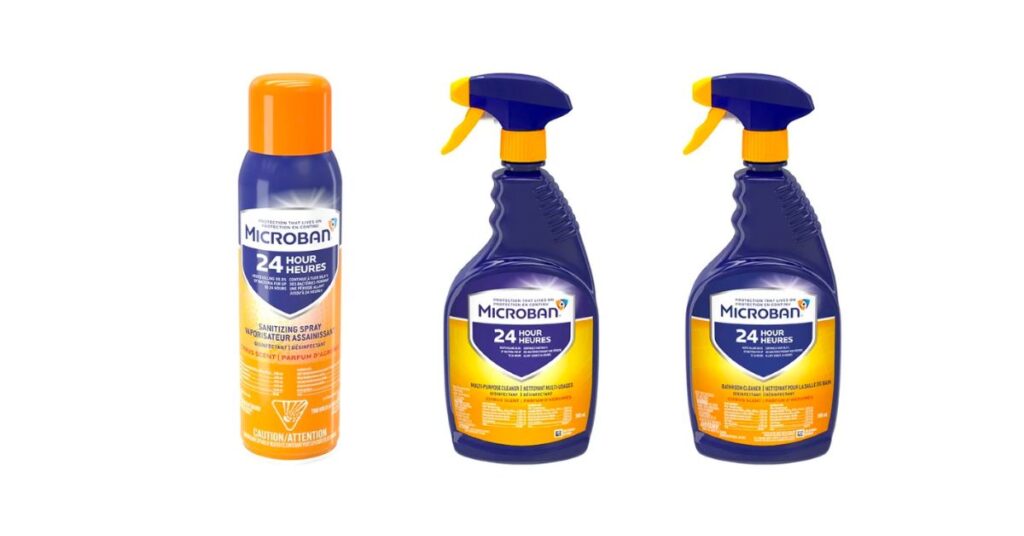Does Microban Kill Strep: Strep Vs. Microban, Who Wins the Battle?
Let’s be honest, germs are pretty much everywhere. Among these, there’s one we especially don’t want hanging around – Group A Streptococcus, or simply Strep. This little nuisance is the culprit behind a host of illnesses, from strep throat to more serious conditions like rheumatic fever and kidney inflammation.
With the COVID-19 pandemic making us more health-conscious than ever, we’re all reaching for those trusty disinfectants, aren’t we? Enter Microban, a popular choice when it comes to banishing germs. So, let’s dive right in and ask: does Microban kill Strep?
Understanding Microban and its Power Against Germs
Microban is a reputable brand of antimicrobial cleaners that vows to annihilate 99.9% of bacteria, viruses, and fungi – a germaphobe’s dream! It contains an active ingredient called Triclosan, lauded for its germ-killing prowess. But can it specifically deal with Strep? Yes, it can!
Not only does Microban kill Strep, but it has also been tested and verified to effectively eliminate various strains of it, including Streptococcus pyogenes, the usual suspect behind strep throat. The product doesn’t discriminate, either; it targets a wide range of germs like E. coli, Salmonella, Influenza, and MRSA.
Microban operates by penetrating the cell membranes of microorganisms and wreaking havoc on their functions. It also impedes the development of biofilms – pesky colonies of microorganisms that cling onto surfaces and resist conventional cleaning methods. The instruction on the product label specifies that Microban is meant for hard surfaces, not for skin or surfaces that come into contact with food. To use, simply spray or wipe it on the surface and let it air dry. It’s versatile enough to be used on various surfaces, including countertops, doorknobs, light switches, bathroom fixtures, and toys.
Microban and Strep: Factors Influencing Their Face-off
However, Microban’s victory against Strep isn’t always a slam dunk. Several factors, such as the type of surface, the level of bacterial presence, and the duration of contact, can influence the outcome. For instance, porous materials like carpets and fabrics might prove trickier to disinfect since bacteria can snuggle into the fibers. And if a surface is visibly dirty, it’s a good idea to clean it first before ushering in Microban for the disinfection process. To ensure safety and efficiency, remember to stick to the guidelines and precautions on the product label.
Microban in the Fight Against Strep: Tips and Tricks
- Consistency is key: Regularly disinfect surfaces with Microban to maintain a clean, germ-free environment.
- Double down on dirty surfaces: If a surface is visibly dirty or greasy, clean it first before applying Microban for the best results.
- Allow sufficient contact time: Let Microban sit on the surface for the recommended duration to ensure optimal disinfection.
- Keep it away from food and skin: Microban is meant for hard surfaces. Do not apply it on skin or surfaces that come into contact with food.
- Follow instructions and safety precautions: Read the product label for instructions on usage and safety guidelines to avoid mishaps.
- Don’t disregard other preventive measures: Remember, Microban is not a substitute for hand hygiene, respiratory etiquette, and social distancing.
Taking Preventive Measures Alongside Microban
In conclusion, the answer to “does Microban kill Strep?” is a resounding yes. It’s an effective disinfectant that can help you maintain a cleaner, healthier living or working space. However, don’t forget that using it properly is crucial. And remember, as handy as Microban is, it doesn’t replace other preventive practices like washing hands, wearing masks, and keeping your distance from others. If you think you or someone at home might have Strep throat, don’t delay in seeking medical help and follow your doctor’s advice to the letter. It’s always better to be safe than sorry!
FAQs
❖ What are some common symptoms of a Strep infection?
Strep infections often come with a sore throat, fever, headache, red and swollen tonsils, and sometimes a red rash. If you experience these symptoms, it’s best to consult a healthcare provider.
❖ Does Microban create resistance in bacteria?
As of now, there’s no concrete evidence suggesting that using Microban results in the development of resistant strains of bacteria. Nonetheless, it’s crucial to use such products responsibly to avoid potential issues.
❖ Does Microban kill other types of bacteria and viruses too?
Yes, Microban has been proven to be effective against various microorganisms, including E. coli, Salmonella, Influenza, and MRSA, among others.
❖ Is Microban safe to use around children and pets?
Yes, when used according to the instructions on the label, Microban is generally safe around children and pets. However, ensure that the treated area is dry before allowing them to come into contact with it.
❖ Can I use Microban to clean electronic devices?
While Microban can be used on a variety of hard surfaces, for electronics, it’s best to refer to the manufacturer’s cleaning instructions to prevent damage.
❖ Can I use Microban on my clothes or fabric-covered furniture?
Microban is primarily designed for hard, non-porous surfaces. For soft, porous materials like clothes or upholstery, it’s recommended to use products specifically designed for these materials.
❖ Does Microban have a fragrance?
Yes, Microban comes in various fragrances. Always test a small, inconspicuous area first to ensure you’re okay with the scent.
❖ How long does the disinfecting action of Microban last?
After application, Microban provides immediate disinfection. However, to maintain a clean and germ-free environment, regular application is recommended.
❖ How often should I use Microban to keep my home germ-free?
This largely depends on the level of activity and the number of people in your home. However, regular cleaning and disinfection with Microban can help maintain a healthy environment.
❖ Can I mix Microban with other cleaning products?
No, it’s not safe or advisable to mix Microban with other cleaning products as it could lead to harmful chemical reactions.
